We all owe a big thanks to "Simon Buckingham," the IBM engineer who is the reason you can order pizza at 2:00 AM. His small piece of software, now known as an application or 'App,' sparked a global revolution in mobile app development.
We live in a world where more than 8 billion apps are available on the market, catering to nearly every basic need possible. According to Statista, more than 250 billion downloads are made every year. These cyberbeings have shown their importance in the digital world.
It’s no surprise that investors are pouring millions into creating standout apps to outshine the competition.
However, the cost of mobile app development remains a significant factor that can heavily impact the overall success of your application. Balancing quality and budget is crucial to ensuring your app not only meets user expectations but also remains financially viable.
This guide will give you a complete picture of making mobile apps, with a focus on trends and cost factors for the year 2025.
Understanding the Mobile App Development Landscape
The mobile app development environment is fast changing, with significant market trends, technological advances, and various app types shaping the industry. As we approach 2025, knowing these factors is important for businesses and clients trying to handle this competitive landscape successfully.
Market Trends
The mobile app market is expected to continue its amazing growth trend, with figures showing that the global income from mobile apps will surpass $613 billion by 2026. This rise is driven by a growing number of smartphone users, projected to hit roughly 7.5 billion worldwide. In addition, mobile app downloads are predicted to approach 258 billion yearly, showing strong demand for the development of new mobile applications across various sectors, including games, e-commerce, and social networking.
User interaction data further demonstrate this trend. Recent studies suggest that users spend an average of 4.2 hours per day on mobile apps, showing the importance of exciting and user-friendly mobile app development. As companies understand the need for a mobile presence, the demand for creative and high-quality apps will only increase.
Technological Advancements
Emerging technologies are playing a key role in shaping the future of mobile app creation. Key improvements include:
-
-
Artificial Intelligence (AI): AI improves user experiences through personalized suggestions and robots, making interactions more natural and efficient.
-
5G Technology: The introduction of 5G networks offers faster data speeds and lower delay, allowing developers to build more complicated and data-heavy apps that can run smoothly.
-
Augmented Reality (AR) and Virtual Reality (VR): These technologies are changing how users interact with apps by offering realistic experiences in games, education, and shopping sectors.
-
These improvements not only improve app usefulness but also open new paths for innovation and creativity in app design.
Types of Apps
Understanding the different types of mobile applications is essential for clients when deciding on their development approach. The three main groups are:
-
-
Native Apps: Explicitly developed for one platform (iOS or Android), native apps offer high speed and smooth interaction with device features such as GPS and cameras. They provide an ideal user experience but require different codebases for each platform.
-
Hybrid Apps: These blend aspects of both native and web apps. Built using web tools like HTML, CSS, and JavaScript, hybrid apps can work across multiple devices with a single script. While they are usually less expensive to build than native apps, they may not work as well in terms of speed and response.
-
Web Apps: Essentially flexible websites designed for mobile devices, web apps run in a browser and do not require downloads. They are cost-effective but need access to gadget features and may not work offline.
-
Each type has benefits and drawbacks, so you must consult with an expert mobile app development company for cost, like JPLoft, before making a choice.
Key Factors Affecting App Development Costs
Knowing the key factors that affect prices is important for making informed choices when starting a custom mobile app development project.
This guide will cover the various factors that add to app development costs, including the type of app, its complexity and features, and the importance of design and user experience.
Type of App: Hybrid and Web Apps
The type of app you choose to build dramatically impacts the overall cost of mobile app development. Native apps are made especially for one device, either iOS or Android. Developing a native app usually incurs higher costs due to the need for specific skills and respect for each platform's rules.
For instance, the expected cost of building a native iOS app can run from $30,000 to $100,000. In contrast, Android app development usually falls within a similar range but may change based on the fragmented nature of the Android ecosystem.
In terms of performance and user experience, native apps usually offer better speed and response compared to their mixed peers. However, this comes at a high price.
-
-
Hybrid apps mix aspects of native and web applications, allowing developers to write code once and spread it across multiple platforms.
-
This method can be more cost-effective, with expected costs running from $20,000 to $80,000, depending on complexity.
-
While hybrid apps offer significant savings in mobile app development costs, they may not perform as well as native apps in terms of speed and user experience.
-
Web apps are another possible choice. They run in a browser and do not require installation. While usually less expensive to develop—between $5,000 and $40,000—they lack access to device features and may not work offline.
Complexity and Features
The difficulty of an app is a significant factor in its development costs.
-
-
Simple Apps: These include basic functions like information shows or simple user interactions. Development costs for simple apps usually run from $5,000 to $20,000.
-
Moderate Apps: These apps contain more advanced features, such as real-time data sharing or push alerts. Their costs usually range between $20,000 and $50,000.
-
Complex Apps: Highly complex applications with features like virtual reality or advanced data processing can exceed $50,000.
-
Feature Breakdown: Key Features That Influence Costs
Specific traits can also greatly impact creation costs. For instance:
-
-
User Authentication: Implementing safe login systems may add anywhere from $5,000 to $15,000 to your budget.
-
Payment Systems: Integrating payment systems can cost between $5,000 and $15,000, based on the difficulty required.
-
Geolocation Services: Features that utilize GPS technology can increase costs due to extra server needs.
-
Understanding these features helps clients select what is essential for their app while combining looks with budget limits.
Design and User Experience
The style of an app plays a crucial part in its growth and directly affects total development costs. Investing in a strong user interface (UI) and user experience (UX) design is important for attracting and keeping people.
Basic designs with standard features usually cost around $3,000 to $6,000, while unique designs suited to brand identity can run from $8,000 to $30,00024. High-end patterns having complex graphics may exceed $30,000.
The choice between looks and budget is important; while spending on quality design can improve user involvement, it also requires careful financial planning. Striking the right mix ensures that your app not only looks good but also works well within your price limits.
Cost Breakdown by Development Phase
Understanding the cost split of app creation is important for clients looking to budget effectively and ensure the smooth launch of their mobile apps.
This breakdown will cover the various stages of app development, including finding and planning, design and modeling, development, testing and quality assurance, and launch and post-launch support.
Consultation and Ideation: Initial Meetings and Research Costs
The finding and planning part is crucial as it lays the groundwork for the entire project. During this stage, initial talks between clients and developers help explain ideas and set standards. The cost of this step usually ranges from $5,000 to $25,000, depending on the complexity of the project and the amount of study required.
This step can take anywhere from 2 to 5 weeks, allowing teams to gain information about user wants, market trends, and competition analysis.
Project Scope: How Detailed Planning Can Save Costs Later
Defining a clear project plan is important for avoiding costly changes later in the development process.
A well-documented scope describes all functions, dates, and outputs. Investing time in detailed planning can save significant costs down the line by reducing scope creep, which occurs when additional features are added after the original deals. Effective project management during this phase guarantees that both clients and workers are matched on standards.
Wireframing and Mockups: Costs Associated with Design Iterations
The design step includes making wireframes and models that show the app's style and functions. This method can greatly influence total costs, with design fees usually running from $3,000 to $30,000 based on complexity. Iterative design methods allow for changes based on feedback, which can lead to multiple versions.
Client Involvement: How Feedback Loops Impact Timelines and Budgets
Client participation during the planning step is important. Regular feedback loops help ensure that the design fits with client standards but can also extend timelines if changes are needed. Balancing looks with budget factors is important; while a polished UI/UX can enhance user involvement, unnecessary versions may raise costs.
Development Team Structure: Roles and Their Cost Implications
The creation process is often the most expensive part of making an app, usually accounting for about 60% of total costs. The organization of the development team plays a key part in setting expenses:
-
-
Developers: The cost of hiring mobile app developers varies by area and skill. In-house teams usually earn higher pay than individuals or outsourcing teams.
-
Designers: UI/UX designers focus on building an easy user experience, which is important for app growth.
-
Quality Assurance (QA) Testers: QA testers ensure that the app works correctly across devices, which adds to total costs but is important for providing a quality product.
-
Communication: Importance of Regular Updates and Meetings
Regular contact between clients and workers is important during this time. Scheduled updates help keep everyone updated about work and any possible problems that may arise.
Establishing clear communication lines can avoid mistakes that could lead to costly delays.
Testing Phases: Types of Testing and Their Costs
Testing is a critical step in app development that ensures usefulness, speed, security, and usage. Various types of tests include:
-
-
Functional Testing: Verifies that each function works as designed.
-
Performance Testing: Assesses how the app works under load.
-
Security Testing: Identifies weaknesses within the app.
-
User Acceptance Trying (UAT): Involves real people trying the app to provide feedback.
-
Testing costs can vary widely but usually account for around 15% to 20% of total development costs. Investing correctly in testing helps reduce risks associated with launching a bad product.
Deployment Costs: Fees for App Store Registrations
The launch part incurs extra costs linked to launching the app on different platforms. This covers fees for app store registrations (typically around $99 per year for Apple’s App Store) and server setup costs, if applicable. Depending on the app's difficulty, launch costs can run from $5,000 to $20,000.
Ongoing Maintenance: Costs for Updates and Bug Fixes
Post-launch help is important for maintaining an app’s performance over time. Ongoing maintenance includes monthly updates to fix bugs, add new features, or adapt to changes in running systems or user needs.
Clients should budget approximately 15% to 20% of their initial mobile app development costs yearly for maintenance. This funding helps ensure that the app stays valuable and current in a fast-changing market.
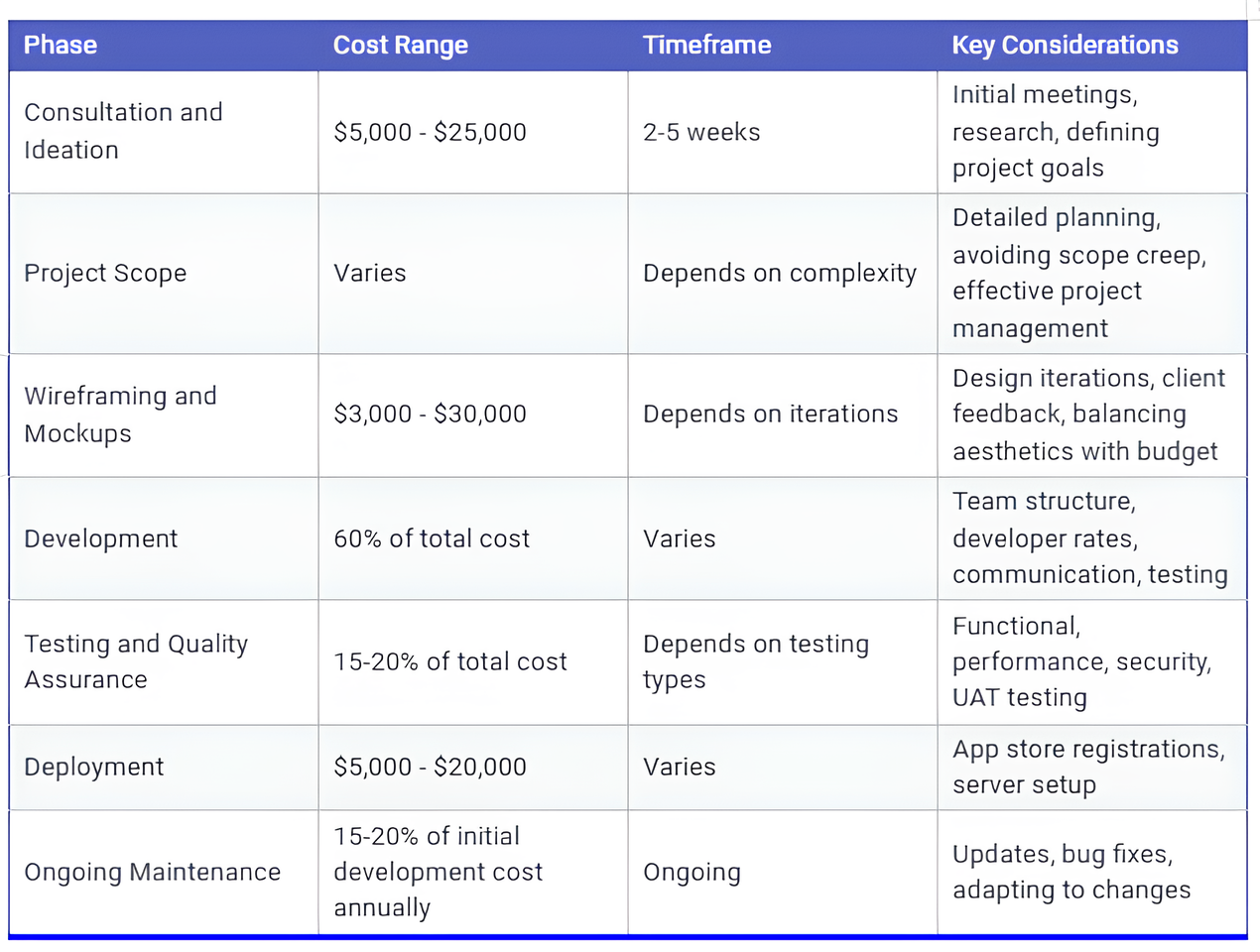
Common Misconceptions About App Development Costs
"It's Cheaper To Build It Myself": Cons of Making Own Apps
Many companies are tempted to save money by developing their own mobile apps. But this method comes with a lot of risks. Technical issues often make it hard to make a strong app since do-it-yourself tools might not support important features or security measures, leaving the app open to attacks.
Big platforms like Apple and Google have strict rules about app submissions. Apps made using general themes are often turned down, which wastes time and resources.
-
-
Cost-Saving Temptation: Businesses often see DIY as a way to save money.
-
Technical Limitations: DIY tools may lack important features and security procedures.
-
Submission Rejections: Apps built with general templates often get refused by platforms.
-
Poor User Experience: Lack of design skills can lead to low interest.
-
Scalability Issues: Difficulty in handling higher user loads or new features.
-
Hidden Costs: Initial savings may be offset by long-term costs.
-
“All Apps Cost the Same”: Why Customization Matters
Another common misconception is that all mobile apps have similar development costs. In fact, customization significantly impacts price. The complexity of features, the technology stack used, and unique target needs all add to differences in cost.
For instance, a basic educational app will typically cost much less than a feature-rich application that requires interaction with third-party services or advanced features like real-time data processing. Customization also includes ongoing care and changes; apps require regular updates to stay current and safe.
-
-
Misconception of Uniform Costs: Many think all apps cost the same.
-
Role of Customization: The complexity of features greatly affects price.
-
Example Variations: Basic apps are cheaper than feature-rich applications.
-
Ongoing Maintenance Costs: Regular changes are important for usefulness and security.
-
Customer Experience Impact: Poor customization can lead to reduced customer involvement.
-
Market Competitiveness: Neglecting adaptation can harm economic standing.
-
“Once Built, It’s Done”: Importance Of Ongoing Support
A common misunderstanding is that once a mobile app is created and launched, the work is complete. In fact, ongoing help and changes are crucial for keeping an app's performance and usefulness.
The tech environment changes quickly; thus, apps must adapt to new operating system versions, security risks, and changed user standards. Regular updates not only fix bugs but also bring new features that keep users involved.
-
-
Neglecting Post-Launch Needs: Many think app development stops at launch.
-
Essential Ongoing Support: Continuous changes are crucial for efficiency support.
-
Adaptation Requirements: Apps must grow with new tech trends and user standards.
-
Bug Fixes & Feature Enhancements: Regular updates improve user experience.
-
Importance of User Feedback: Monitoring feedback helps find growth areas.
-
Risk of Desertion: Neglecting help can lead to falling interest and app desertion.
-
How to Prepare for App Development Costs
Budgeting: Tips for Setting a Realistic Budget
Setting a reasonable budget is important for creating a good app. Begin by performing a thorough study to understand the average costs connected with similar projects in your business.
This includes breaking down possible costs of development for mobile apps into areas such as design, development, testing, and marketing. It’s important to account for both direct costs (like coder pay) and secondary costs (such as project management and upkeep).
-
-
Conduct Research: Understand average prices for similar jobs.
-
Break Down Expenses: Categorize costs into design, development, testing, and marketing.
-
Account for Direct and Indirect Costs: Include pay and project management.
-
Set a Contingency Fund: Allocate 10-20% of the budget for unexpected costs.
-
Regularly Review Budget: Adjust amounts as needed throughout the job.
-
Prioritizing Features: Identifying Must-Have vs. Nice-to-Have Features
Identifying must-have versus nice-to-have features is important for effective planning and project management. Start by naming all the wanted features and functions of the app.
Then, sort them into two groups: important features that are critical for the app's core usefulness and secondary features that improve user experience but are not necessary for the initial launch.
-
-
List Desired Features: Document all features you want in the app.
-
Categorize Features: Divide them into must-have and nice-to-have groups.
-
Focus on Core Functionality: Prioritize important features for the initial start.
-
Prevent Scope Creep: Helps handle project scope and resources successfully.
-
Launch an MVP: Gather user comments to improve on additional features.
-
Choosing the Right Development Partner: What to Look for in a Development Team
Selecting the right mobile app development partner is important to the success of your app project. Begin by analyzing possible partners based on their technical knowledge and business experience.
Review their websites to judge the quality of their past work and its usefulness to your project. Communication style is also important; ensure that they match your company culture and values to support teamwork.
-
-
Assess Technical Expertise: Ensure possible partners have appropriate skills.
-
-
-
Review Portfolios: Evaluate past job quality and usefulness.
-
-
-
Consider Communication Style: Align with your work mindset for better collaboration.
-
-
-
Look for Modern Methodologies: Prefer partners using Agile or similar models.
-
Clarify Contractual Terms: Define objectives, dates, and payment systems clearly.
-
Case Studies and Real-Life Examples
Successful Client Stories
These are some of the best mobile app development projects for businesses, which helped them grow from small startups to large firms.
1. PressBox Stats: Football Stat-Keeping App
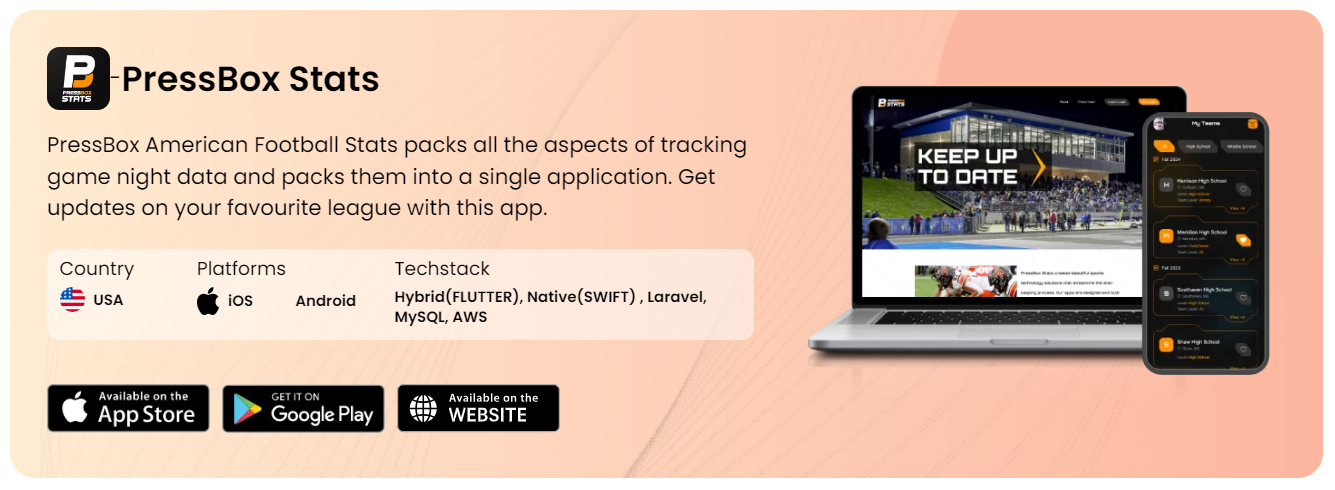
JPLoft created PressBox Stats, a complete mobile tool intended for analysts in football. The app offers real-time information, including team and individual stats, box scores, and play-by-play comments. Users can easily share game information via a link and send finished PDFs to media contacts post-game.
The simple design allows analysts to track live scores quickly, removing the need for human changes on complex plays. This project had a modest budget and has become a go-to tool for football teams looking to improve their stat-keeping routines.
2. Mozaik: Short Film Creation App
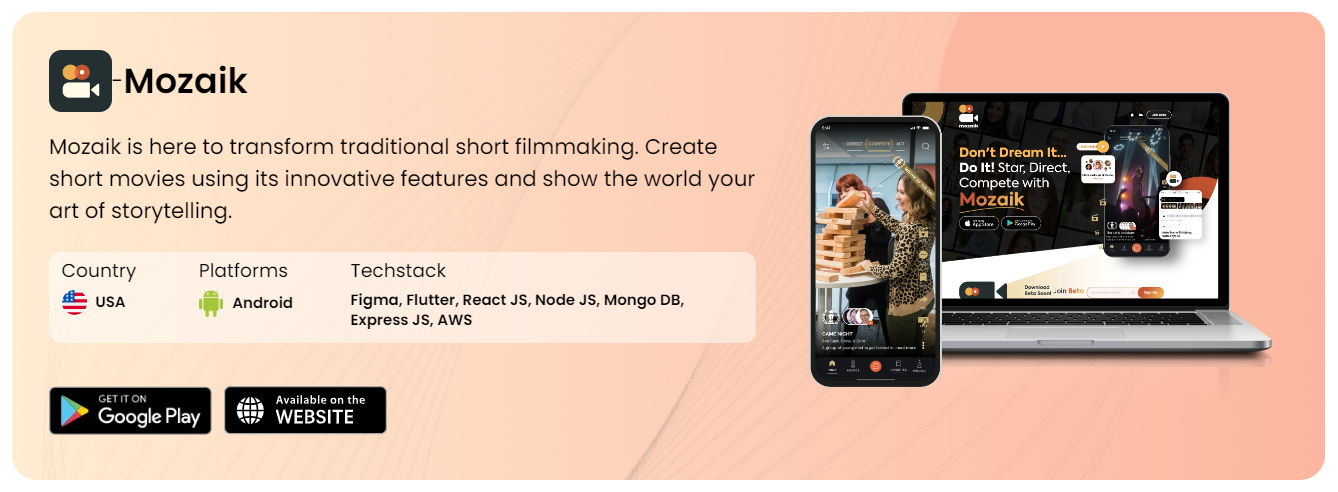
The Mozaik app is a transformative tool that revolutionizes the standard short film-making process. Developed by JPLoft, this app allows users to make joint short films in as little as one hour, greatly lowering the time and cost usually involved with film creation.
By allowing global cooperation and managing post-production tasks, Mozaik allows artists to create high-quality short films quickly. The project was performed within a modest budget while getting amazing user interest and happiness.
3. TruuBlue: AI-Powered Dating App
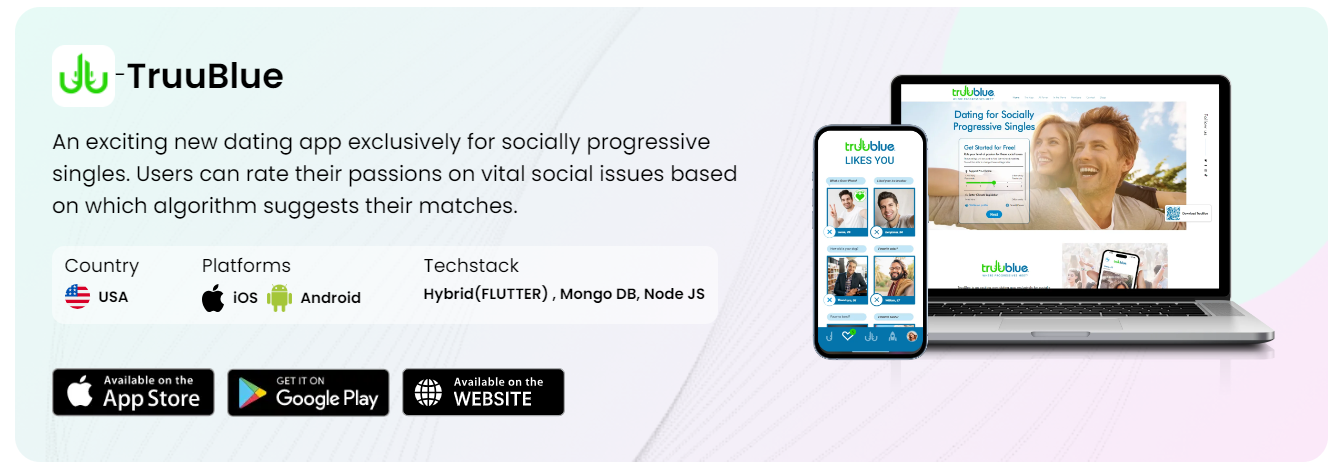
TruuBlue is a unique dating app that uses artificial intelligence to improve user experience. JPLoft created this app with a sizable budget, allowing for advanced features such as mood analysis of user chats and communication help for creating answers.
The app also includes unique features like Ice Breakers in accounts to help users meet based on common hobbies. The investment in AI technology has paid off, resulting in good user comments and high connection rates, with many users reporting successful matches.
Lessons Learned
-
-
Real-Time Features Enhance Engagement: PressBox Stats' success shows the importance of real-time data changes in connecting users successfully. Features that ease complicated jobs can greatly improve user happiness.
-
Efficiency is Key in Creative Processes: The Mozaik app shows that easing the film creation process through cooperation and automation can lead to faster production times and lower costs, appealing to prospective producers.
-
AI Enhances User Experience: TruuBlue shows how adding AI can provide useful insights and help users, making the dating experience more unique and fun.
-
Budget Management is Crucial: For TruuBlue, successful budget management allowed for the inclusion of advanced features without losing quality. This shows the value of planning and resource distribution in enhanced mobile app creation.
-
User Feedback Drives Improvement: Continuous involvement with users across all apps stresses the need for feedback loops to improve features post-launch, ensuring that the apps stay relevant and effective.
-
These real-life examples from JPLoft's collection showcase successful mobile app development projects across various industries, offering useful insights into effective strategies for achieving positive results in mobile app development.
How Can JPLoft Help You With Cost Management?
In conclusion, effective cost management in app development is crucial for achieving project success. By understanding budgeting, prioritizing features, and choosing the right mobile app development partner, businesses can optimize their investments and create impactful applications that meet user needs and drive growth. To improve your app development journey, working with JPLoft can greatly enhance your cost control and project success as we are the best mobile app development company in the USA.
With our vast knowledge and proven track record, we focus on providing high-quality mobile and web applications suited to your unique needs. We employ a consultative method to understand your budget limits while delivering new solutions that ensure optimal resource allocation. Our freedom in involvement models allows you to choose the best fit for your project, ensuring you get the most value for your investment.
Whether you're a startup or an established business, JPLoft's experience can guide you through every step of the mobile app development process, from planning to launch.
Don’t wait any longer; Contact Us Today to discuss how we can help you achieve your app development goals while effectively controlling costs. Your great app journey starts with a simple chat!








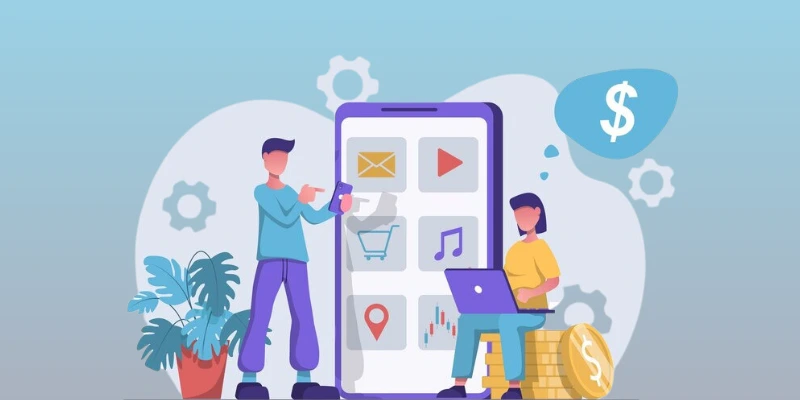



Share this blog